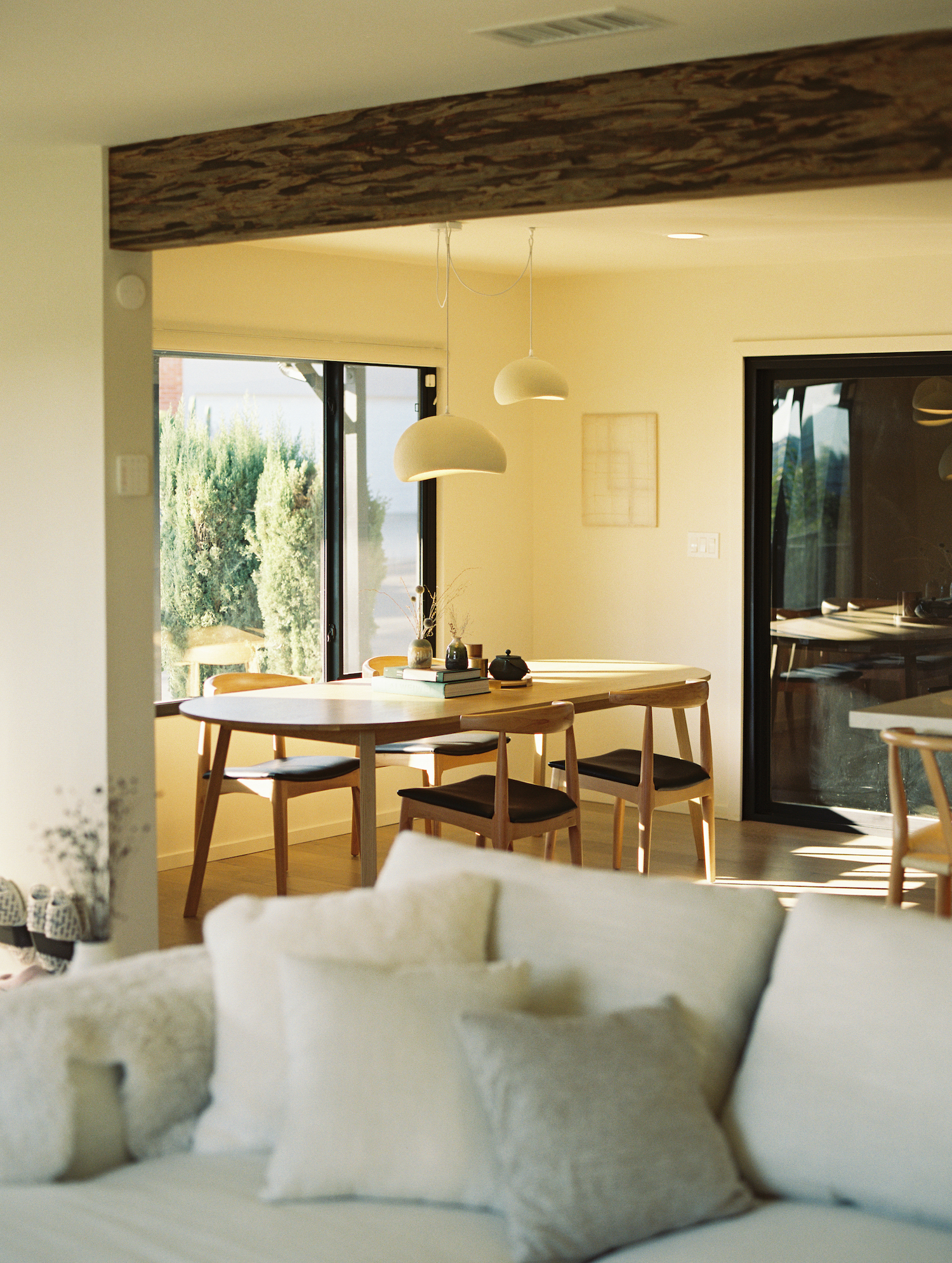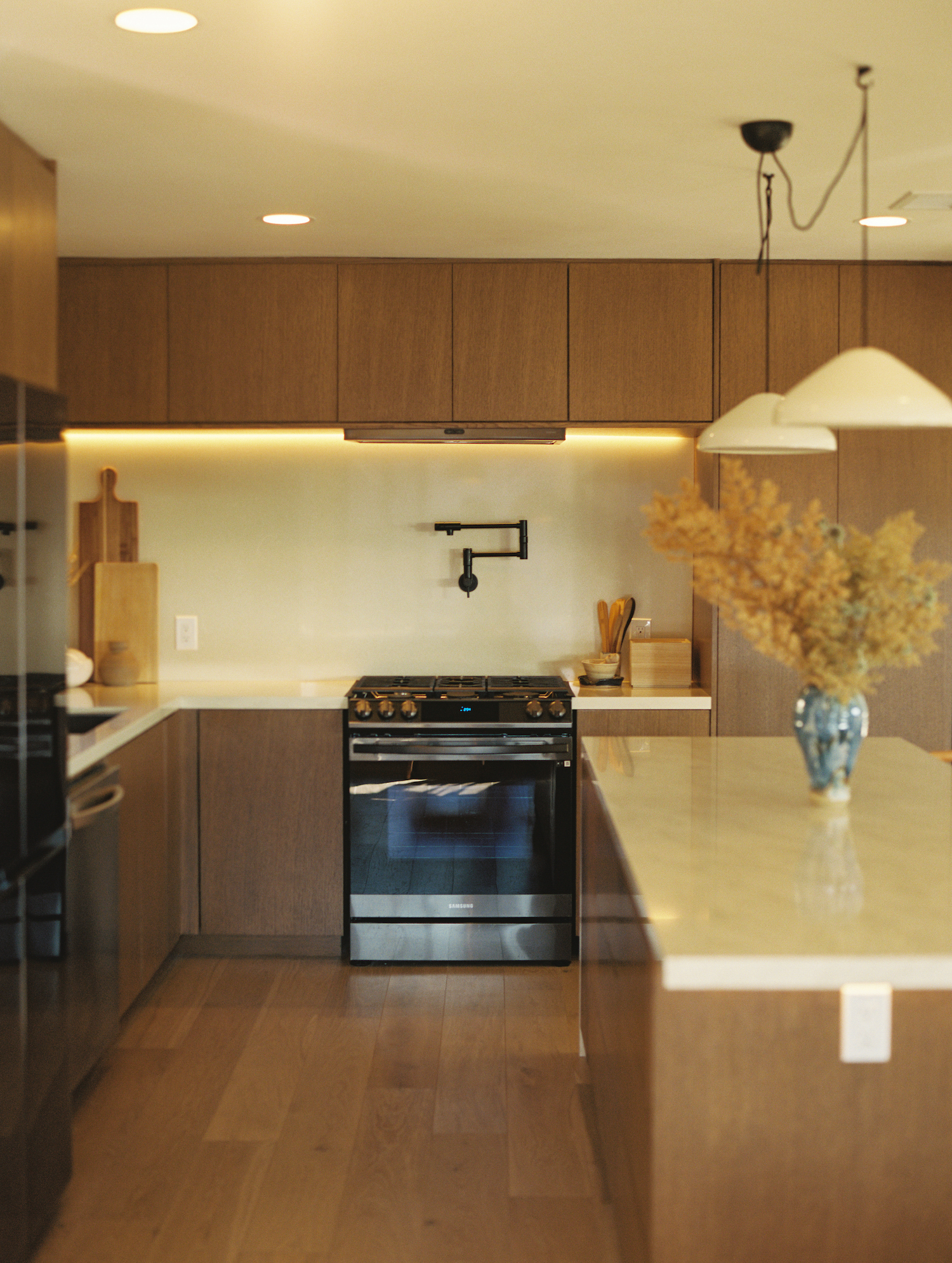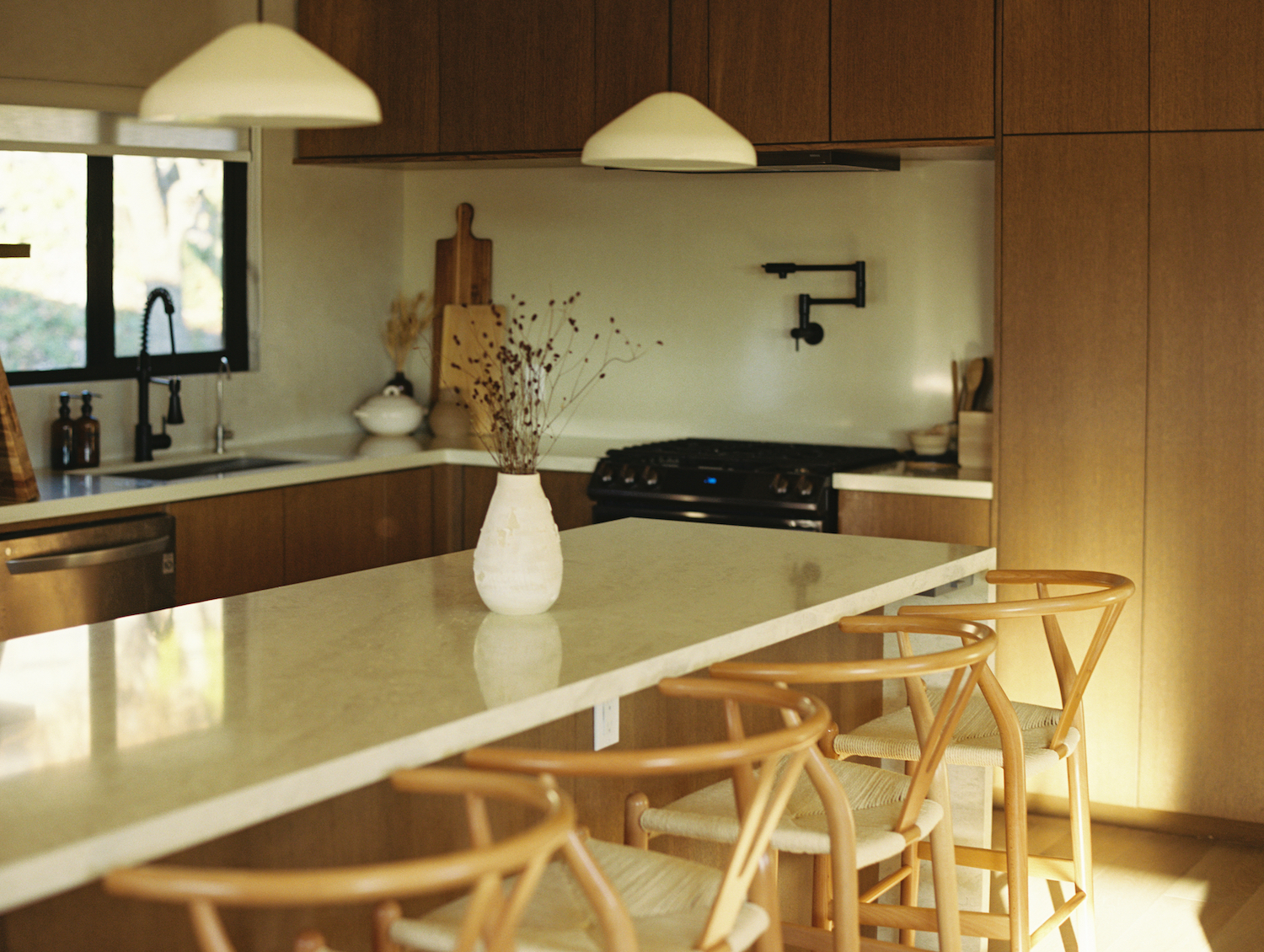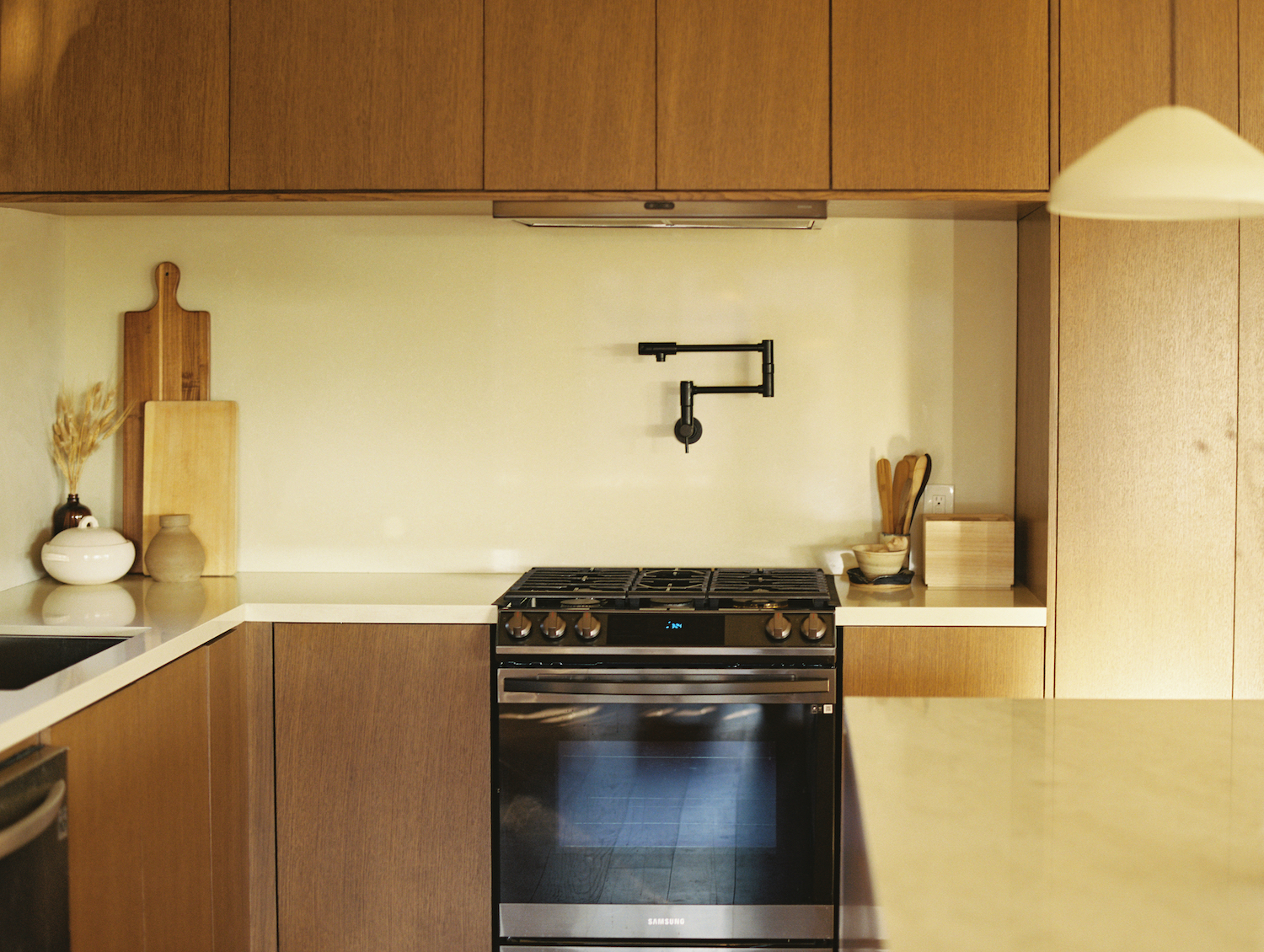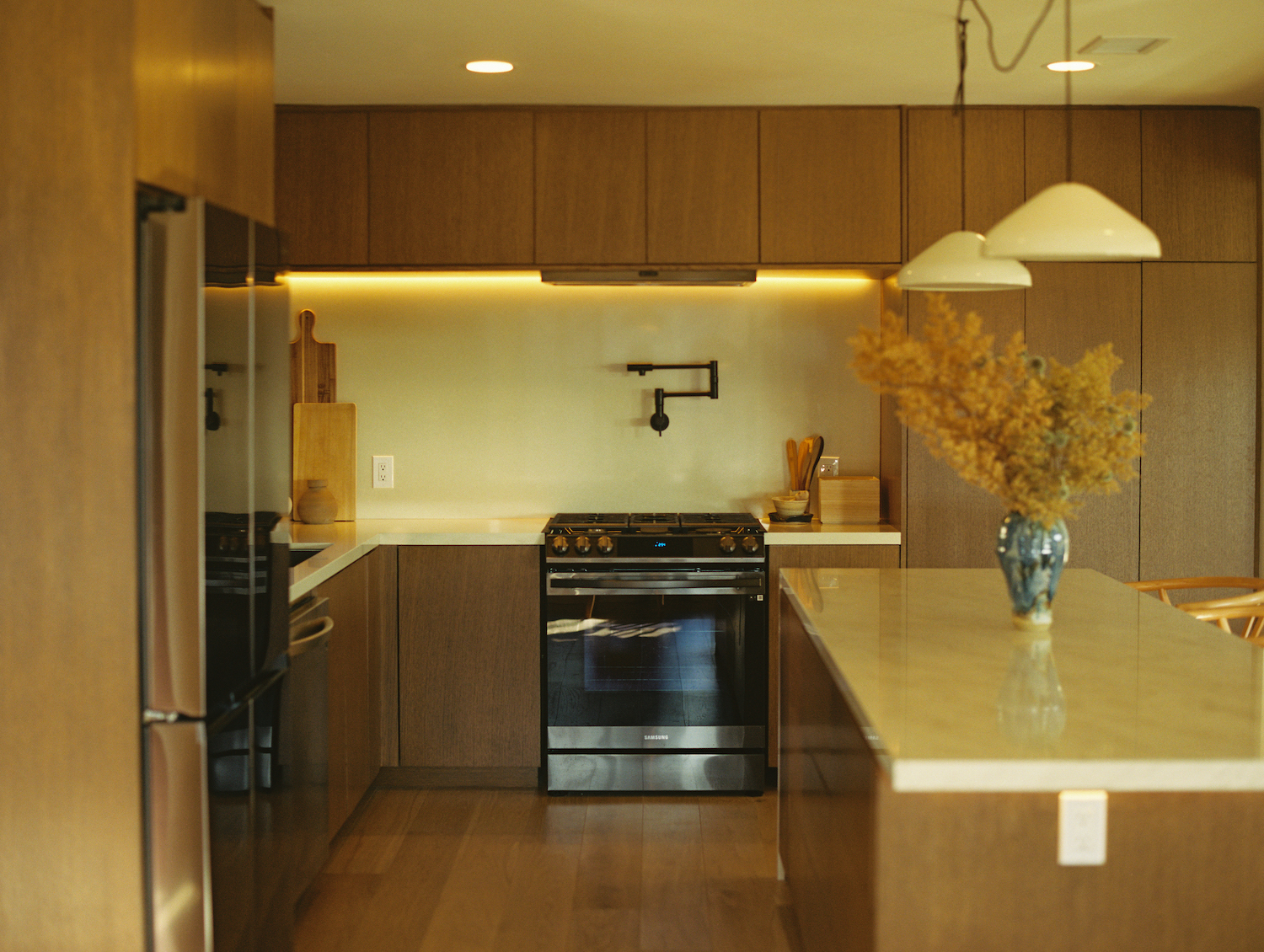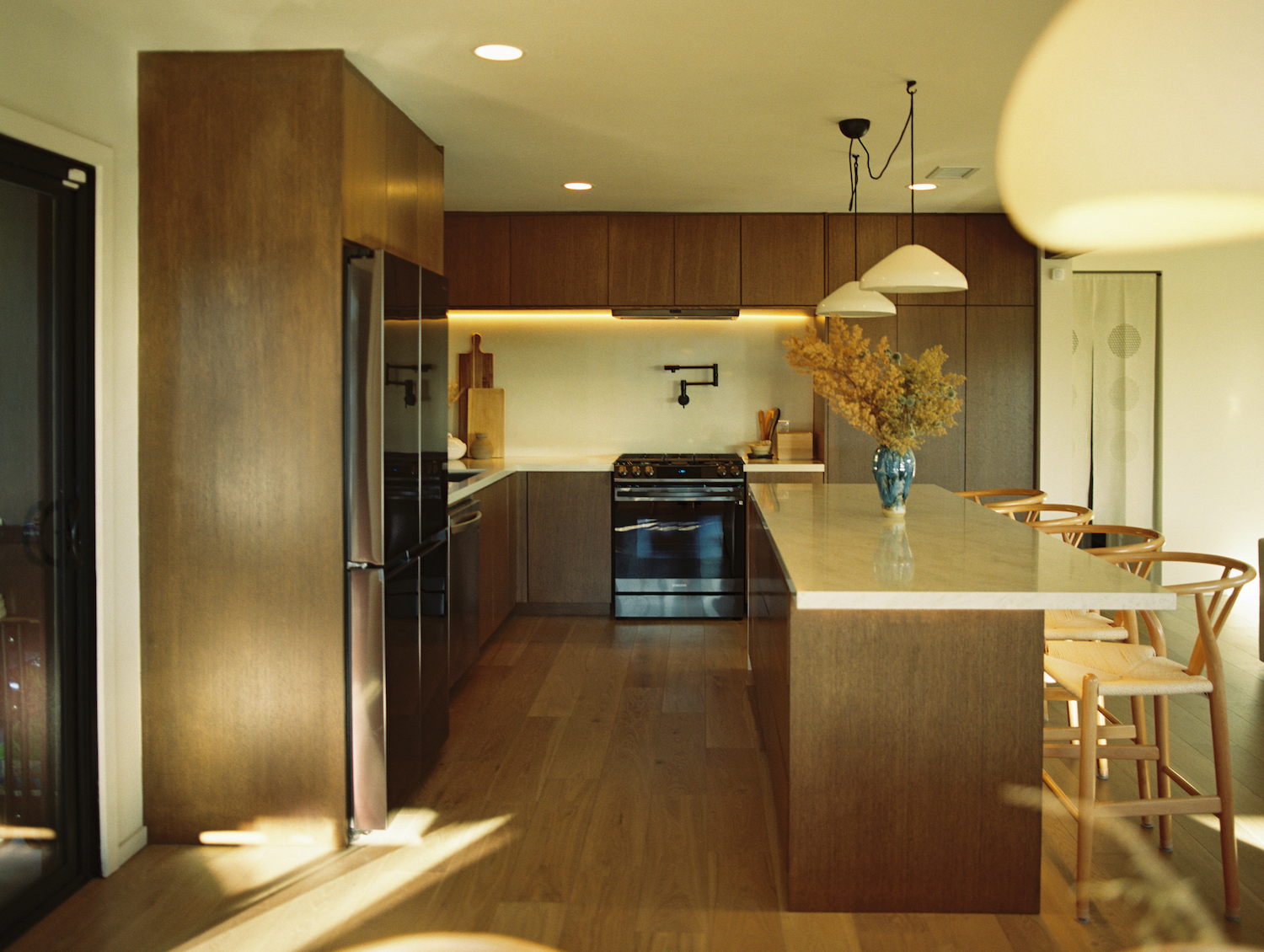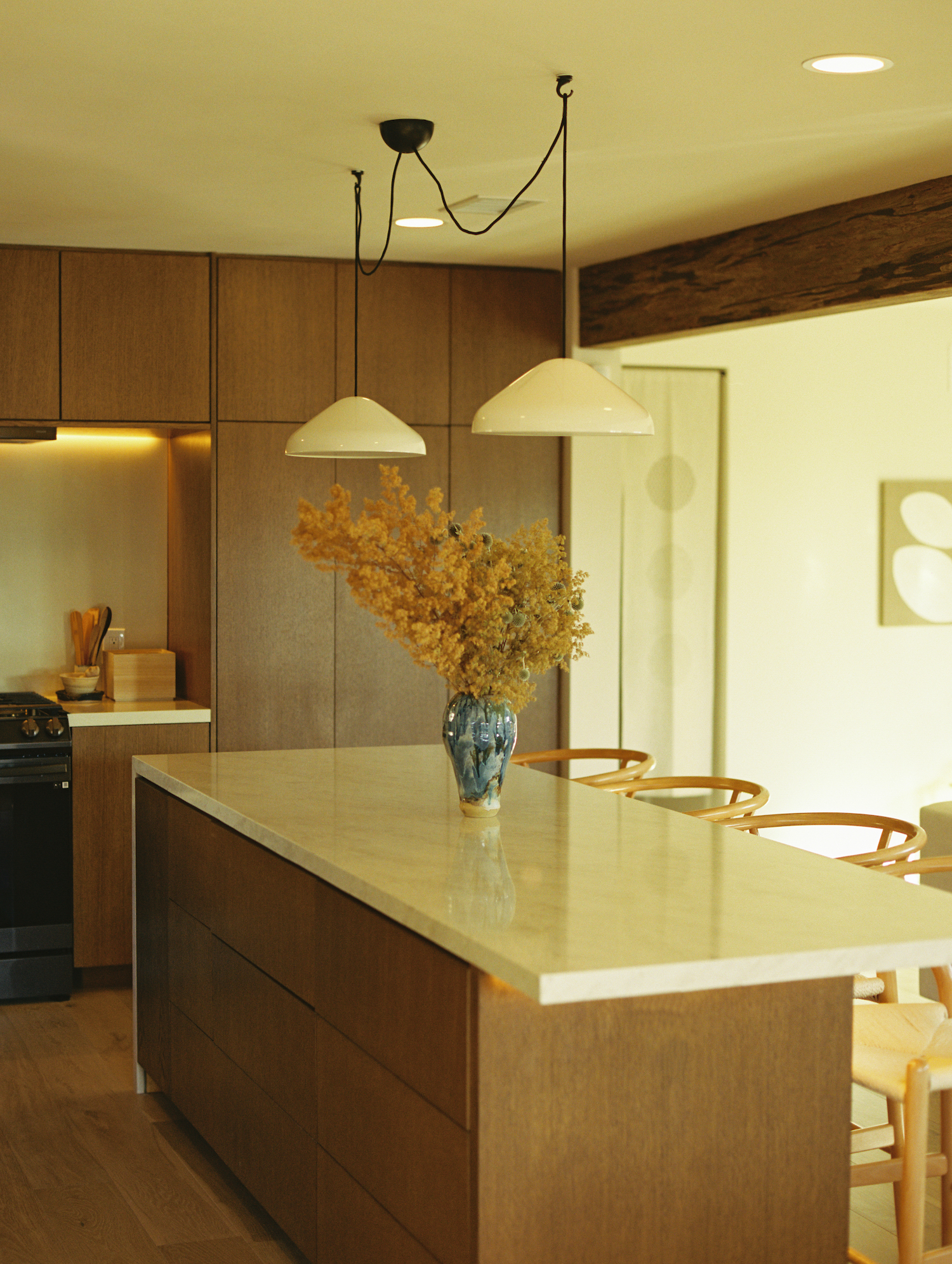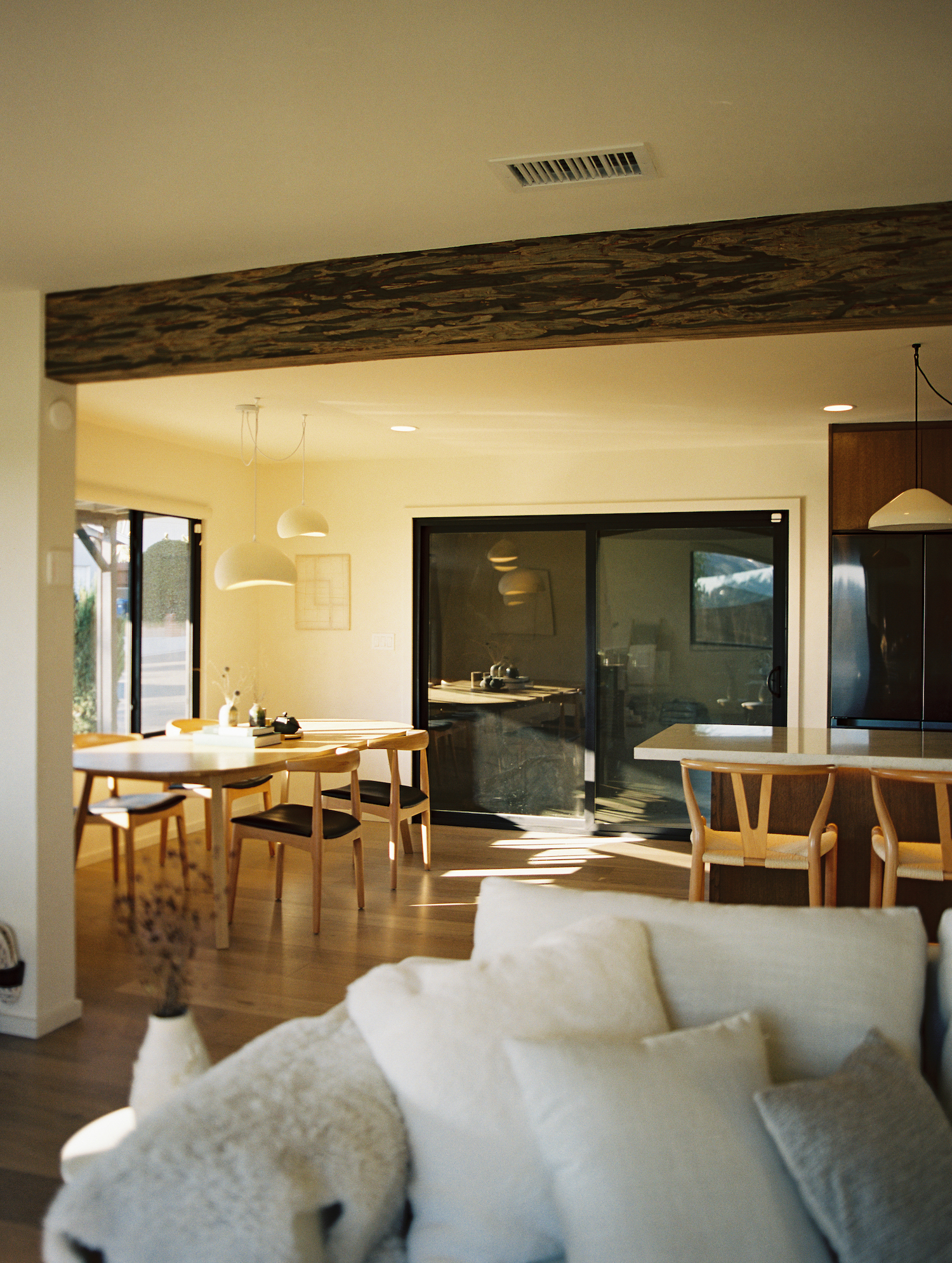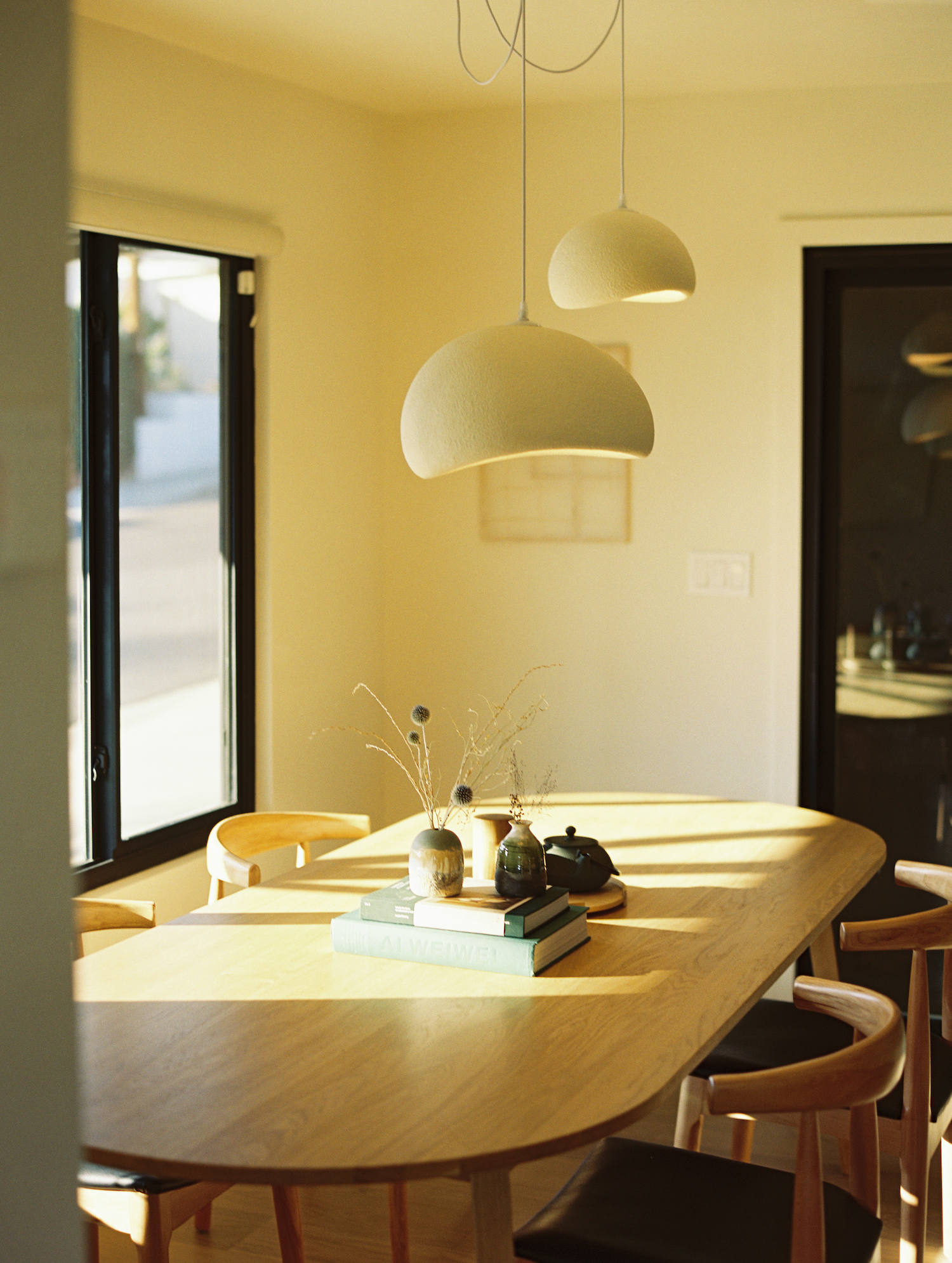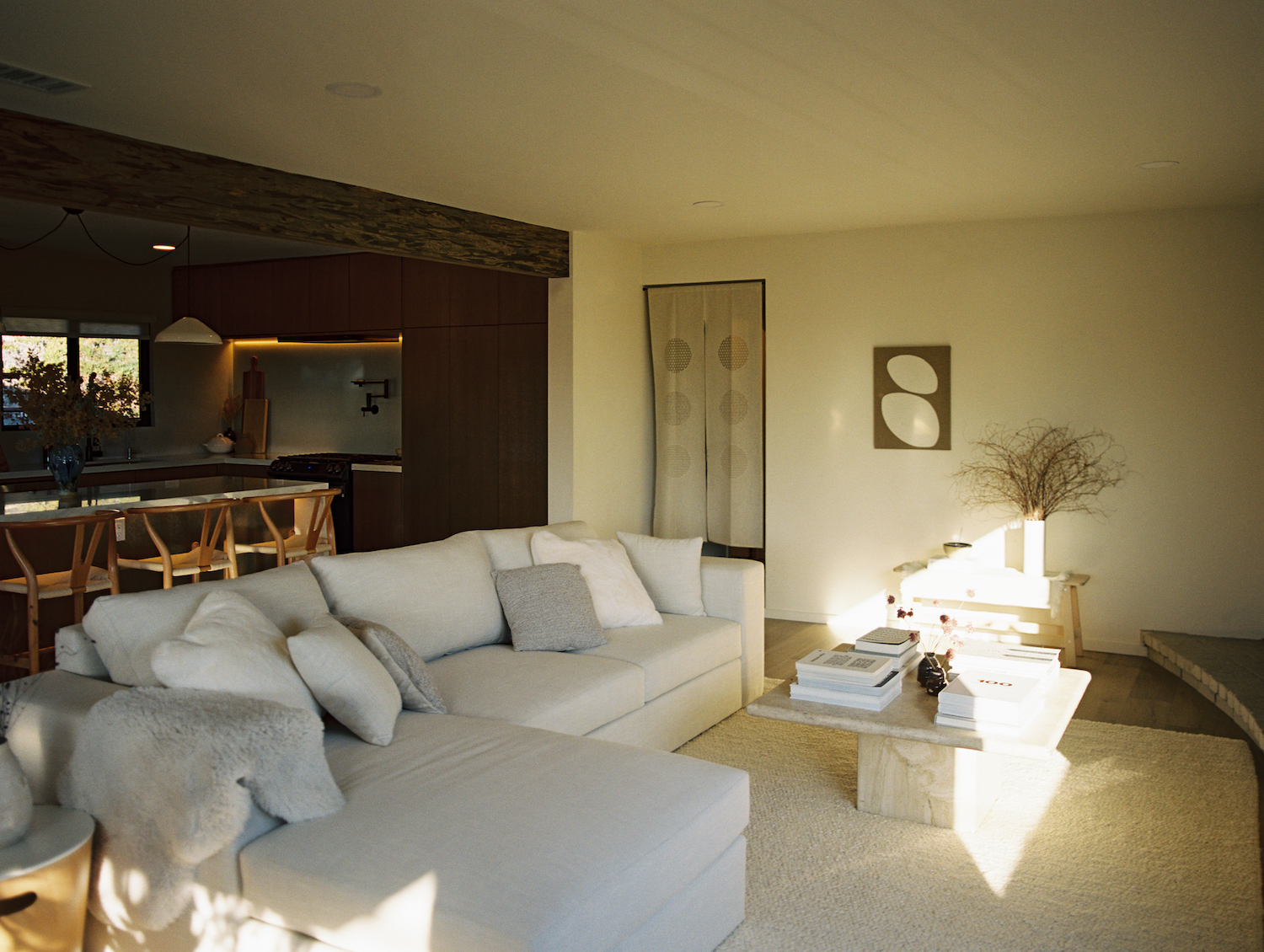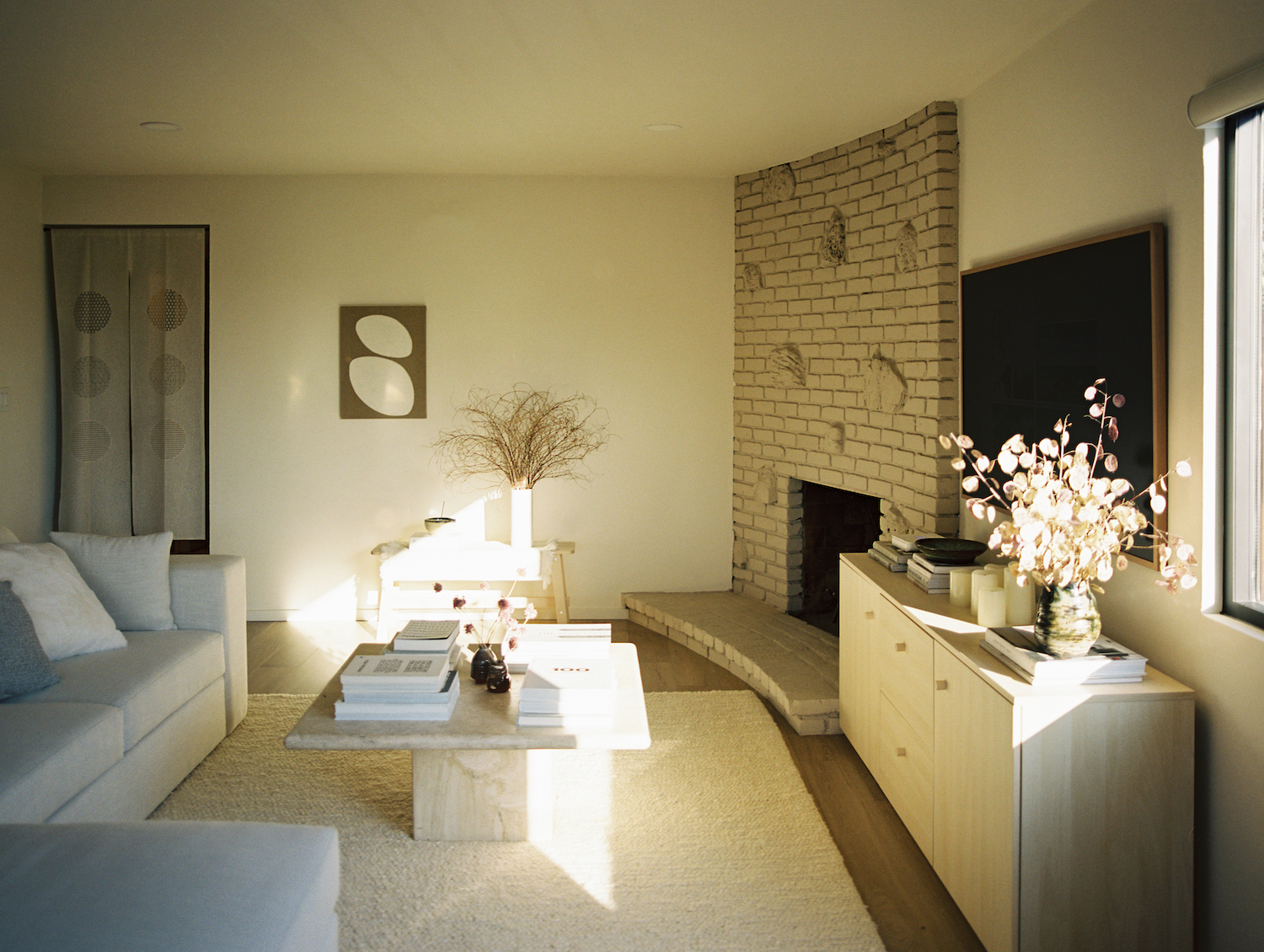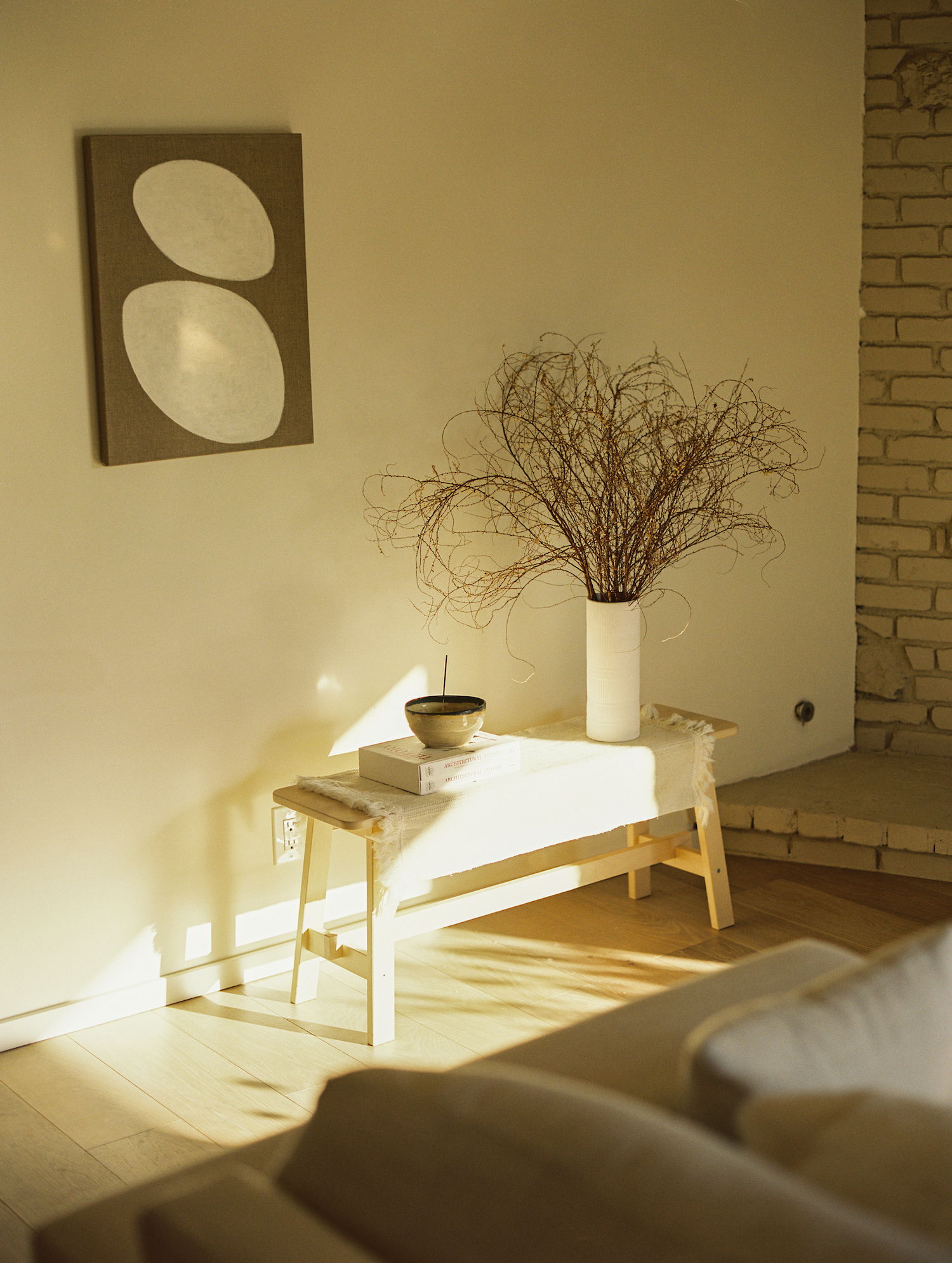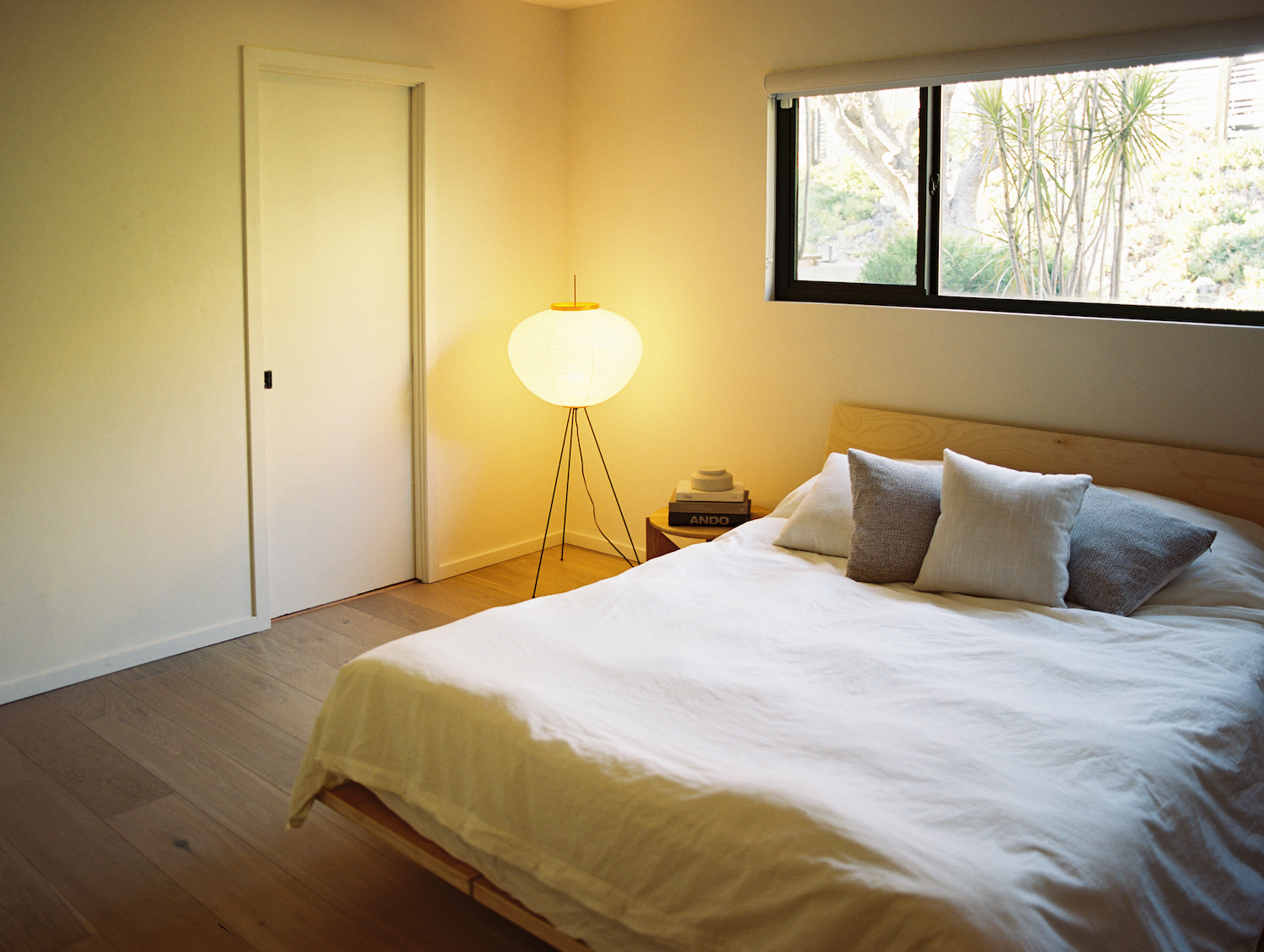Fortune House is a minimal residence located in Los Angeles, California, designed by OWIU. Typically used in the culinary world, the term “omakase” takes on special meaning in the overall design philosophy of OWIU, an architecture and design firm based in Los Angeles and Singapore. Literally meaning, “I leave it up to you”, the Japanese term encompasses the highly specialized client relationships that build their portfolio of projects. Each project is also a kind of marriage, a thoughtful dialogue between not only the client and designer but also space and nature, the old and the new, light and balance. Trust is the glue that bonds the many elements of creating an OWIU project, spaces designed as open but curated experiences. For OWIU, work is the most satisfying when the team can find a meaningful equilibrium between the integrity of the existing elements with the potential of a future space.
While the work is undoubtedly technical, the emotional aspects of building a home have become a kind of speciality for the firm – an intuitive ability to synergize their clients’ aspirations into functional and balanced form. Like all artistic practices there is inherent mystery in the creative process, a human and poetic touch within a grid of parameters. With residential projects this becomes a much more intimate collaboration as the firm is entrusted with interpreting the abstract into form. Looking always to preserve an aesthetic spine in each space they approach, the Fortune House in Pasadena became a model project for the firm. Jackson Chan and Michelle Lee fell in love with Fortune House, a 1,540 square foot property running along the Arroyo Seco in East LA.
Originally built in the 60s, the house exemplifies many of the classic features from the Mid-century modern period that have become so closely associated with the architecture of Los Angeles. As their first home, Chan and Lee wanted to preserve the historic elements and essential layout of the structure while shifting the energy of the space to reflect their Asian heritage. Weary of pan-Asian design gimmicks and the ease of empty minimalism, they reached out to OWIU, having become familiar with their previous work and the third-culture aesthetic that has become a signature of the firm. Co-founders of OWIU, both Amanda Gunawan and Joel Wong grew up in a global Asian culture, having spent their respective childhoods in diverse Asian communities such as Singapore and Indonesia and highly influenced by frequent trips to Japan.
The resulting aesthetic through their lived experience afforded them access to a unique palette of design references that reflect a generation of Asians with a more blended awareness beyond a homogenized ethnic tradition. Not fusion, not nouveau Asian, but a third-culture aesthetic defined and developed by a new generation of Asians that understand the nuances connecting a multitude of Eastern cultures. For Jackson Chan who grew up in Hong Kong and Michelle Kim whose family is from Korea, the OWIU team was an easy fit. From the start it was important that the house not only reflected their individual cultures but also the commonalities in their backgrounds.
Seemingly ubiquitous in all Asian cultures, the importance of food and communal gathering was central to the design. Both Chan and Kim have resonating memories of the kitchen as the center of their childhoods – a place where generational gaps were resolved, where entertaining guests became an act of love. Wanting to reflect this shared emphasis on communal eating, OWIU took special care to make the kitchen a focal point in the design. Accordingly, upon entrance, the first thing visible at Fortune House is the custom kitchen island and an adjacent dining room set against a backdrop of sliding glass doors to maximize light and spotlight the kitchen.
The dining space seamlessly transitions into a living room with a 12” Parallam wood beam running across the ceiling between the kitchen and living space to suggest a partition without interrupting the gentle transitions between rooms. What was once three distinctly different spaces gives way to a more open floor plan by simply reorienting the kitchen. Previously enclosed by overhead cabinetry and a countertop separating the kitchen from the dining room, OWIU chose to remove the space inhibiting elements and create functional wrap-around countertops along the walls. A distinguishing feature in many OWIU projects, the addition of a central island creates focus and adds an element of theater and display to the kitchen as it becomes visible from nearly every angle of the main space.
The exposed nature of the kitchen necessitated considerable hidden storage to maintain the continuous lines of the space without clutter. For both Chan and Kim, efficiency of space equates to peace of mind. In order to accommodate this need, OWIU custom fabricated wood paneled storage under the countertops, island, and surrounding the refrigerator. The handle-less design makes the storage indistinguishable from structural features, making the cabinetry at once; functional and beautiful. And as a finishing touch and a special nod to Chan and Kim’s love for cooking, the OWIU installed a pot filler above the stovetop range. As the couple both work from home, the importance of efficiency and calm became even more integral to the design.
Synonymous with OWIU’s own design philosophy, Chan and Kim believe strongly that creativity and productivity are best served in neutral spaces. The use of natural wood elements from carpentry and the off-beige palette soften the space creating warmth in place of a clinical sterility often associated with workspaces. The emphasis on natural light serves to transition the space organically from a work space to the leisure of a home at the end of the day. In some ways the design concept behind the multi-functionality of a transitional space and creating a dialogue between residential and workspaces is a continuing theme for the firm. OWIU’s own studio transitions easily from an office to a more casual space where the team frequently gathers and hosts events.
For Gunawan and Wang, it’s not about obscuring the lines between work and play, it’s about creating exponential potential in a space through intelligent design. While creating a home more reflective of Chan and Kim’s culture, taste, and lifestyle; OWIU endeavored to keep some defining elements of the original structure. One of the more whimsical details of the house, the curved fireplace was preserved and updated rather than re-designed. Previously bricked and raw with inlaid rock patterned into the wall, OWIU chose to paint the brick in a slightly darker color than the wall to create subtle textural interest making the feature more sculptural while maintaining the initial form.
Fortune House was designed as a conversation – a spatial dialogue between cultures, work and life balance, aesthetic and utility. It was built to reflect the evolving needs of contemporary creatives who are quickly outgrowing their traditional working environments. For Chan and Kim, and for Gunawan and Wang, efficiency of space is manifested when design enables both productivity and peace of mind. Beyond the function of the design, the poetry in the space is the nostalgia woven through the house but most prominently on display in the kitchen.
The openness and ease of the kitchen and communal spaces sparks memories of old traditions, the importance of family, and the generosity of food. At the same time, the updated design invites the inhabitants to create new traditions, to use memory as a template to generate new experiences. Like so much of OWIU’s work, Fortune House makes no judgment value between the new and the old but instead seeks to marry the two in order to create new balance.
Photography by Justin Chung
